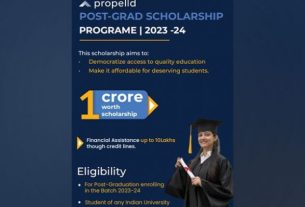|
Getting your Trinity Audio player ready...
|
Development funders play an important role in advancing inclusive finance: with around 3,000 active projects and total commitments of more than USD 45 billion, they influence the dynamics of financial systems and help transform the way these systems work to include and serve people living in poverty. Reflecting on who is funding what and where – information provided by CGAP’s annual Funder Survey – is a good starting point. But we also need to look at how funders work, as it fundamentally shapes their ability to trigger transformational change to achieve long-lasting impact at scale.
The AFD Group and Luxembourg’s Ministry of Foreign and European Affairs partnered with CGAP to do just that. The Financial Inclusion Navigator, a review process facilitated by CGAP, provided an independent view and recommendations on how funders can work to effectively transform inclusive financial systems. Both organizations have a long history of supporting inclusive finance and were interested in how to maximize their ability to advance inclusive finance as a contributor to multiple Sustainable Development Goals (SDGs).
As different types of funders – including development finance institutions, foundations, multilaterals and bilateral agencies – go through a similar reflection process, we want to share five key actions they can take to set themselves up effectively to drive transformational change. Since each funder is unique, these insights might imply different implementation approaches, but they remain relevant regardless of a funder’s strategy or operational model:
1. Impact narratives elevate inclusive finance as a priority and help staff identify opportunities
Inclusive finance is an important enabler of multiple development goals such as adapting to climate change and achieving gender equality. However, the pathways from inclusive financial services to achieving these goals are often not straightforward. Developing impact narratives helps explain these pathways and align staff around a joint vision. This is also especially helpful for project managers who are not financial inclusion experts. Based on these narratives, staff across thematic divisions and with different financial inclusion experiences can define concrete opportunities to drive impact, more proactively identify potential projects, and understand how inclusive finance can function as an enabler.
2. A focal point for inclusive finance can be a key asset to steer the development of the inclusive finance portfolio, even when the focal point is not directly designing projects
Multi-dimensional development problems require technical experts across thematic divisions working together to design, manage and monitor projects and investments which build on sound, interdisciplinary expertise. However, the typical organizational matrix of development agencies tends to create silos with divisions operating independently, focusing on their own specific projects and objectives which in turn can hinder an approach to problem-solving that focuses on achieving desired outcomes.
Since inclusive finance is an enabler of development goals, rather than a standalone objective, inclusive finance projects are now often managed by various units across a funding agency. While this represents opportunities to leverage inclusive finance for diverse development outcomes, it poses certain risks as well. Generalist staff (or staff with other sector expertise) might find it challenging to design and monitor inclusive finance projects and components, which can lead to missed opportunities or unsustainable project design. At a minimum, its role should be to develop impact narratives, provide quality assurance during project design, monitor, and analyze the inclusive finance portfolio, extract lessons learned, and build the capacity of staff. Of course, this requires support from leadership and clear guidance as to how these focal points work with other thematic and geographic teams.
3. Systematically analyzing root causes of financial exclusion during project design helps identify entry points for transformational change
For example, given the persisting gaps in women’s financial inclusion, diagnostics should systematically analyze specific constraints women face in accessing and using financial services as well as the root causes of such constraints, including gender norms. These diagnostics are not necessarily longer than conventional diagnostics but require a different set of skills such as the ability to perform political economy analysis. Requiring that project proposals are based on such diagnostics strengthens project design and quality assurance. Technical guidance and funding for staff and implementers to acquire the necessary skills and conduct such diagnostics is essential.
4. Supporting financial services providers can be even more transformational when funders plan for scaling impact beyond their partners
Funders often aim for a ‘demonstration effect’ which assumes that supporting a partner institution can lead to broader change when its competitors copy a new behavior or other market actors react to it. For example, a business model innovation adopted by a pioneer might inspire others to change the way they do business, leading to much greater change in the financial system. However, ideas and new practices usually do not spread spontaneously from pioneers to the broader market. In addition, they need to measure whether the demonstration effect and broader adoption are happening. Funders can use theories of change to design interventions that more intentionally trigger change beyond their direct partners and transform the way financial systems work (CGAP provides specific guidance on this).
5. Semi-annual portfolio analysis is essential to identifying and responding to lessons learned
Funder staff need time and data to do so. Progress should be monitored and analyzed at both the project and portfolio level at least semi-annually, with actionable information and lessons learned shared across divisions, implementers, and key partners. Defining learning objectives helps focus performance management and learning on priority topics.
What’s next: fostering innovation to achieve transformational change
At CGAP, we believe that acting on these insights is necessary and possible, and we encourage different types of funders, including foundations, development finance institutions, multilaterals and bilateral agencies, to share their experiences with us and their peers. While there are many quick wins to be made following these insights, our work with funders has also pointed to the need for a more fundamental re-think of the role of funders in advancing inclusive finance. Many problems development cooperation seeks to address require innovative solutions, however, funders are set up to scale proven models rather than fostering innovation.
In recent years, funders have started experimenting with a variety of mechanisms to encourage and enable innovation (for example, AFD’s FISONG, USAID’s DIV, DFC’s PI2 or FMO’s MASSIF), and work on root causes by facilitating knowledge sharing and capacity building. These mechanisms are great, but they often sit outside of main operations and remain small and dispersed. In a world of polycrisis and global challenges, innovation must be central to what funders do. We hope to partner with CGAP members through the Financial Inclusion Navigator to identify new insights.
If you are interested in participating in CGAP’s Financial Inclusion Navigator, please contact Estelle Lahaye at [email protected] and Carola Saba at [email protected]



